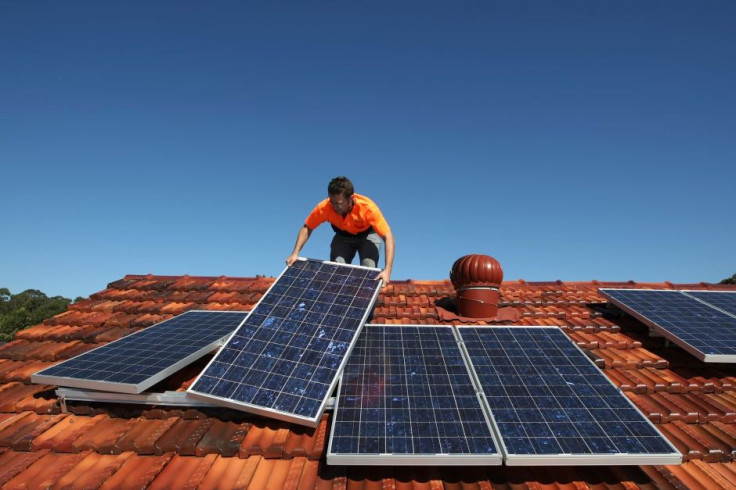Solar energy to be cheapest power source in 10 years

Solar energy is set to become the cheapest source of electricity in many parts of the world within the next 10 years, with the cost of photovoltaics (solar panels) continuing to decline.
In fact, in some parts of the world, solar energy would become cheaper than the heavily subsidised fossil fuel energy, says a report.
The report released by German think tank, Agora Energiewende, was commissioned to steer Germany towards its 80% renewable energy target.
"The technology still has further improvements so we expect that within the next 10 years photovoltaics will become, in many regions of the world, the cheapest source of electricity," said CEO Dr Patrick Graichen.
"The finding is there's no end to the cost decline in photovoltaics."
Solar photovoltaic prices have fallen by 80% since 2008.
In 2013, commercial solar power cost the same to produce as other sources of electricity in Italy, Germany and Spain, and is expected to do so soon in Mexico and France.
According to the report titled The Current and Future Cost of Photovoltaics, the price drop is set to occur even in conservative scenarios, without any major technological breakthroughs.
While the cost of producing hardware for solar will continue to plunge irrespective of local conditions, the financial and regulatory environments will play a key role in the price drop.
Stable regulatory conditions are needed to keep the cost of finance down, the report said.
Dr Graichen, former head of the Division for Energy and Climate Policy at the German Federal Environment Ministry, said the falling price was being driven by several factors like cheap modules and large scale production in China.
"So we have the effect of the mature technology with a global market, where prices decline, and second, we've got to know better how to integrate it into the systems during the past five-six years," Graichen said.
He drew attention to Germany's extensive programme on photovoltaics in the past years, which has led to about 40GW being installed.
"That is still only 6 per cent of our electricity production, but still it is already 6 per cent, and we've seen how that already impacts on our electricity system in the sense that we don't need peak power of gas-fired power plants in the summer anymore," he said.
India plans to install 100GW capacity of solar power by 2022, while China aims to achieve 100GW of solar power capacity by 2020.
The global installed capacity of solar electricity has increased by six times to 135GW in 2013 from 23GW in 2010.
Solar energy graph
Solar cell manufacturers face a trade-off between performance and cost. Most commercial solar cells are made of crystalline silicon that take a lot of energy to produce but give efficiencies of 20% and above. Thin-film solar cells have lower material costs, but are half as efficient.
The challenge to find a cheaper alternative led to the development of perovskite-based solar cells that use abundant and cheap starting material.
Researchers predict that perovskite cells will surpass 20% efficiency soon.
Concentrated solar thermal plants got a boost when a record efficiency above 40% of conversion of sunlight into power was reported by researchers at the University of New South Wales.
The CPV technology uses an ultra efficient concentrated photovoltaic receiver combined with an optimised heliostat collector field of sun-tracking mirrors. It currently has a 0.25% global market share of the 40GW of PV being installed in 2014.
World electricity generation is forecast to grow by 67% from 22,126 terawatt-hour in 2011 to 37,000 in 2030. A major part of this additional capacity is expected to be based on fossil fuels.
Electricity production from fossil fuels accounts for more than 40% of man-made CO2 emissions. Existing coal based plants are committed to almost 300 billion tonnes of emissions over their lifetimes.
Fortunately, renewable power capacity has grown 85% over the past 10 years, reaching 1,700GW in 2013, and renewables today constitute 30% of all installed power capacity.
© Copyright IBTimes 2025. All rights reserved.





















